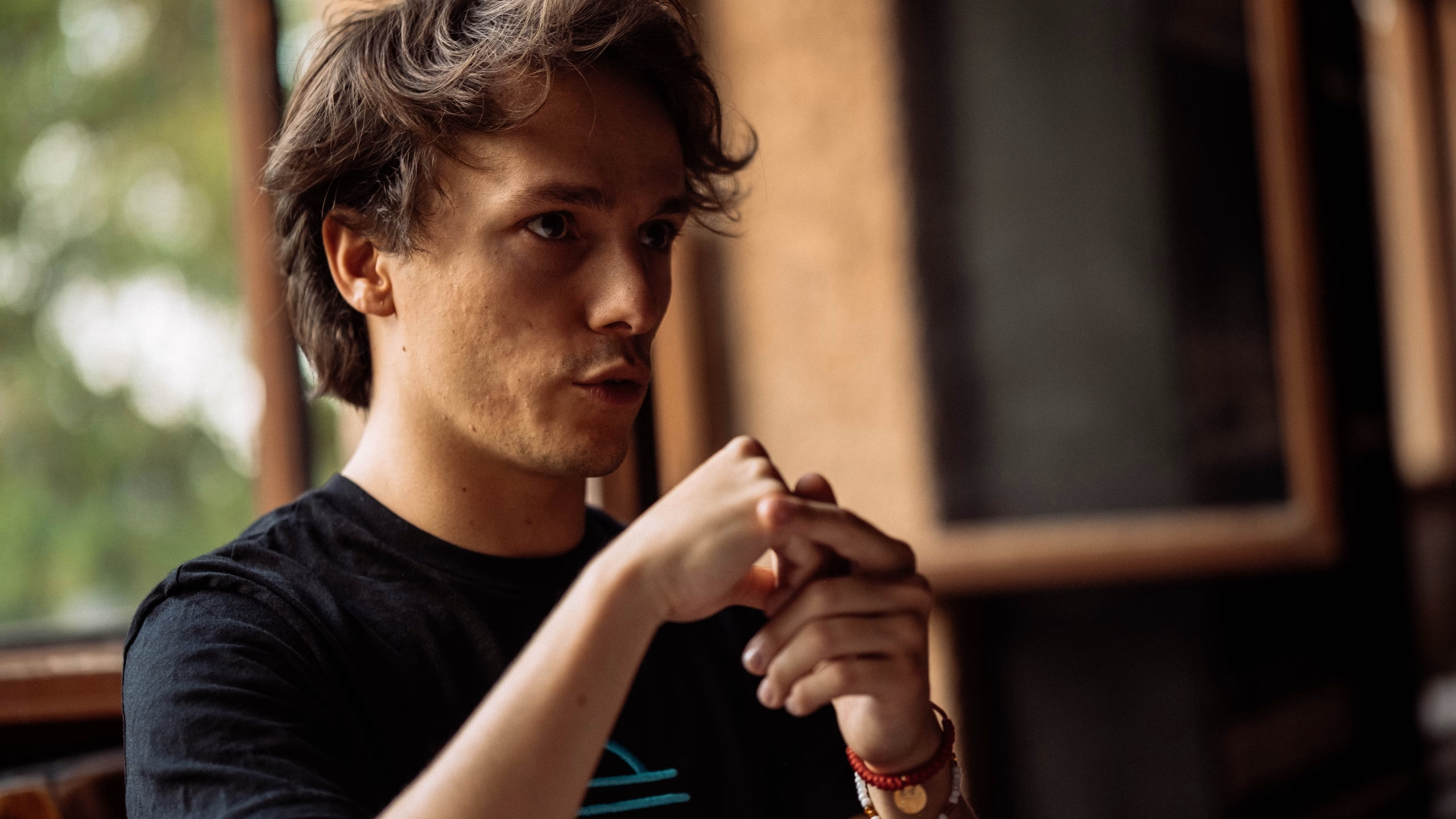Matteo Mancuso
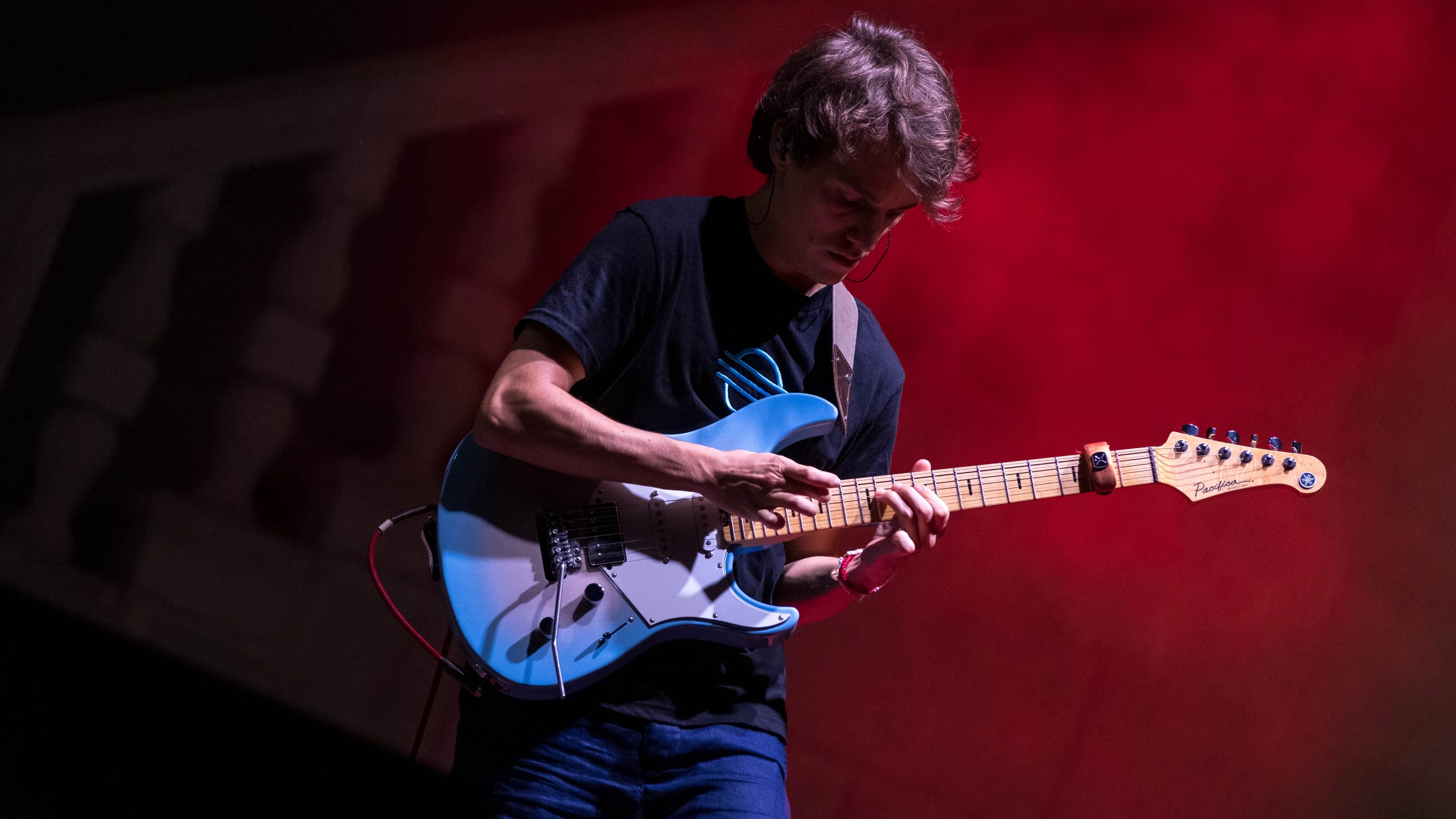
Beyond Technique: The Astonishing Art of Matteo Mancuso
Fresh off a monumental first tour of North America and performances at premier festivals like North Sea Jazz, guitar phenom Matteo Mancuso sat down with us to discuss the realities of touring, the evolution of his revolutionary technique, and the future of his music. Despite a grueling schedule, his passion for the instrument and thoughtful approach to his art were unmistakable. We live in an age of musical abundance, yet a paradoxical famine of true astonishment. We have access to every technique, every scale, every lick ever played, digitized and available at the click of a button. But true innovation—the kind that stops you in your tracks and forces a recalibration of what you thought was possible on an instrument—remains the rarest of commodities. This is why the arrival of Matteo Mancuso feels less like a new chapter in the history of the guitar and more like the discovery of a missing manuscript that rewrites the entire book. At just 28 years of age, Mancuso doesn’t merely play the guitar; he seems to have redesigned it from the inside out. His technique is often described as revolutionary—a hybrid picking approach so fluid and polyphonic it suggests three hands at work—but to focus solely on the mechanics is to miss the point entirely.
What makes Mancuso a figure of such compelling importance is the soul he channels through this breathtaking machinery. He is a musician who has absorbed the entire lineage of his instrument—from the fiery passion of the Mediterranean to the sophisticated harmonies of jazz and the raw energy —and synthesized it into a voice that is utterly, unmistakably his own. It is a voice that has earned the stunned admiration of legends like Steve Vai and Al Di Meola, not because he can play fast, but because he speaks a new dialect in the language of music.
Witnessing him live with his trio is to hear a rare and spellbinding synergy, a collective breath where improvisational fire is forged with flawless cohesion. It is a conversation, not a lecture.
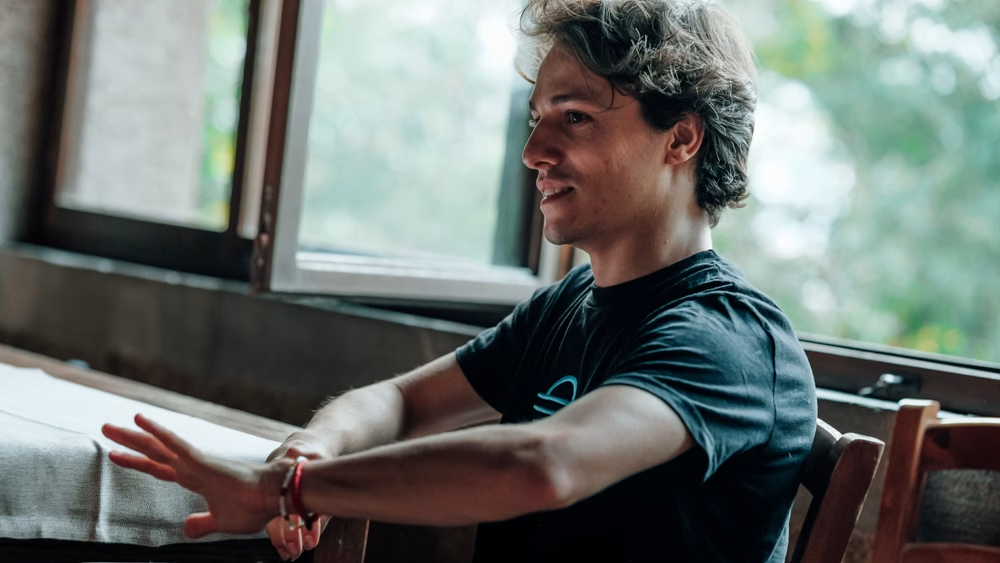
The Concert Witness (TCW): Thanks for taking the time, Matteo. I understand you’ve just come back from a massive tour of North America and you’ve been hopping between festivals. You must be exhausted.
Matteo Mancuso: Yeah, lots. The first gig was in Boston, I believe, on May 20, and the last one was in Montreal, Canada, around June 30. We got back to Italy on July 2. So it was almost two months of touring in the US—our first American tour. Then we did North Sea Jazz in Rotterdam, a festival in Geneva last night, and now we are here.
TCW: So, does the constant gigging itself act as your practice, keeping you in shape, or do you still carve out time to woodshed?
Matteo Mancuso: Well, yeah, playing every day helps. This time, for example, we had a really long soundcheck. If we have the chance, I’ll use that time to practice a little bit, warm up, play some stuff. But the thing is, if you tour too much, some songs eventually get boring after a while. We’re still touring with the first album that came out in 2023, and now it’s 2025. Some tunes are starting to feel a little stale. That’s why we want to stop for a bit to create new songs to play live, just to keep things fresh.
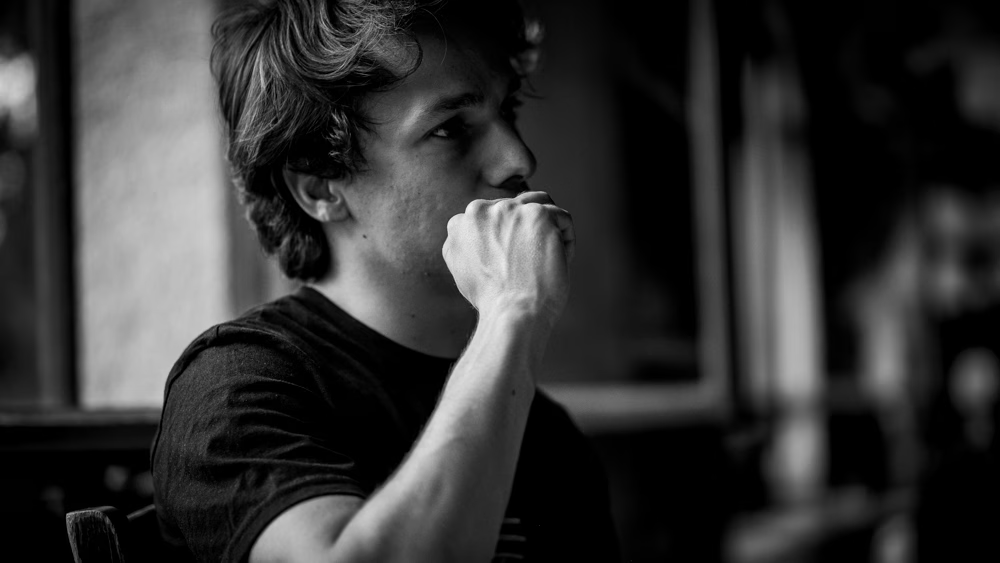
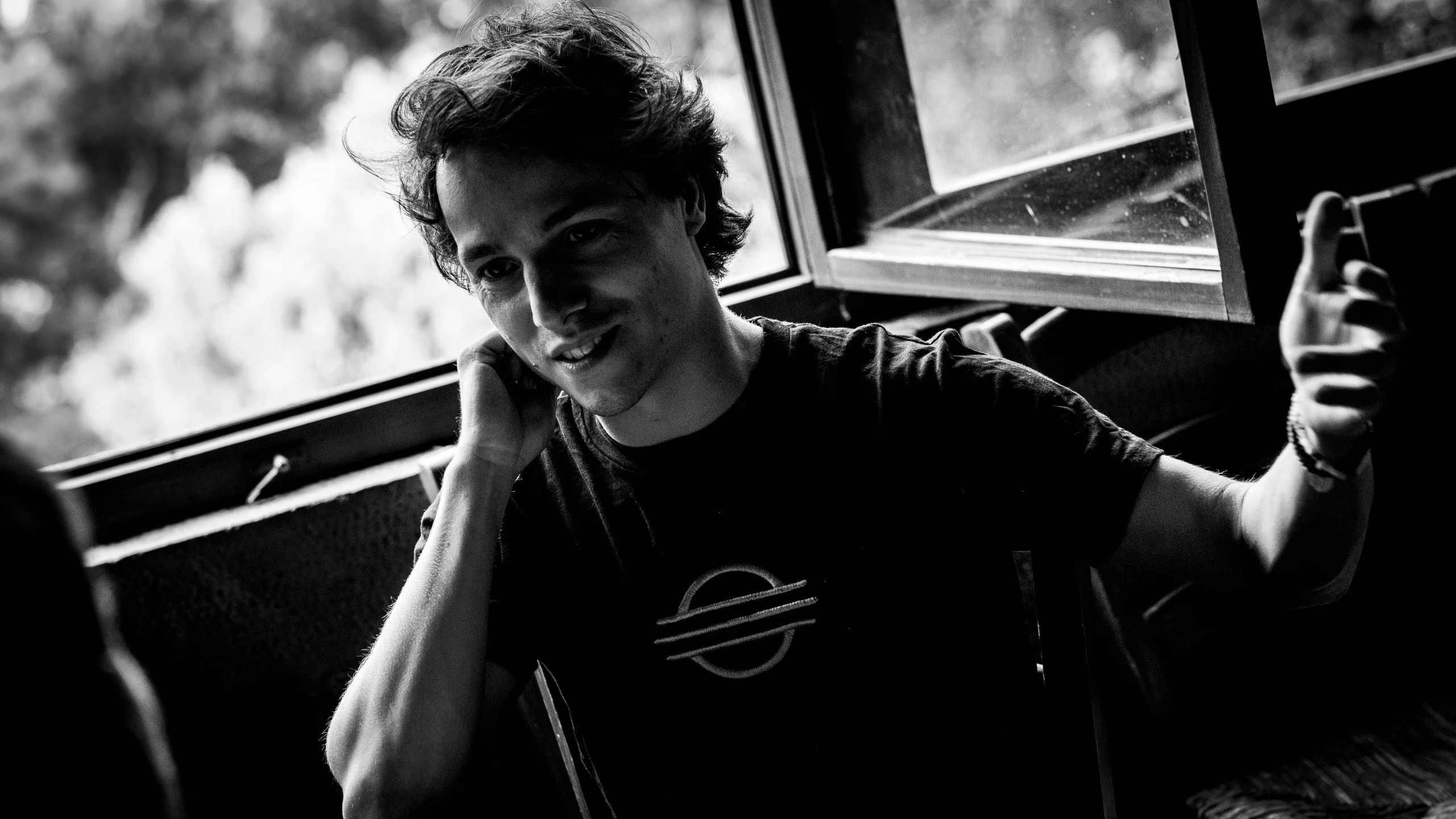
TCW: You’re doing this in a trio format, which is a great platform for freedom but also incredibly demanding for a guitarist.
Matteo Mancuso: Yes, you have to solo a lot, maybe too much. You have to comp all the time; you are always at the forefront, you never back up. Even when I’m comping, I’m trying to be actively comping, not just playing chords, otherwise it gets stale. It’s very hard. That’s why we’re thinking about expanding to a quartet next year with another guitar player. It would be closer to the original composition.
We run backing tracks for some songs because we realized that for some of them, just one guitar isn’t enough. You need a harmonic instrument in the background. I’m not a fan of playing with backing tracks—you’re locked in, it’s always the same chords, the same length. It’s not that improvised. So we’d like to replace them with another guitarist to make things more interesting compositionally. Of course, you have more freedom as a trio, but if you recorded a song with 27 guitars, a trio no longer represents that idea. Some songs just don’t work in that setting.
TCW: Do you change the setlist around to keep it interesting for yourselves?
Matteo Mancuso: It depends on how long we have to play. If it’s just an hour, we remove some songs, but the setlist itself remains mostly the same. We might change the order, but the songs are the same, at least in this period.
TCW: Your approach to the electric guitar is what made you famous. You use a fingerstyle technique that most associate with classical or flamenco guitar. Was this a conscious choice, a niche you developed?
Matteo Mancuso: I never learned how to play with a pick. I just started with fingers from the start. I didn’t know you were supposed to use a pick for electric guitar. I always saw my father playing classical guitar at home—he’s a great player with both pick and fingers—but he was playing a lot of classical. When I was ten, my guitar heroes were people like Angus Young, Deep Purple, Led Zeppelin. I was attracted to the electric guitar, so I just started playing it with my fingers. I only started studying classical guitar later.
TCW: That self-taught approach is clear in your famous transcriptions of complex saxophone solos by players like Michael Brecker. How did you develop that ear?
Matteo Mancuso: I just developed it over time because I wanted to figure things out on my own. I took advantage of the internet; I was always on YouTube searching for stuff. Having everything available on your phone was a great advantage compared to my father’s generation, where slowing down a record would change the pitch and the audio was bad. I realized I had all these tools and I wanted to learn as much as possible. At the conservatory, I wanted to learn non-guitaristic things—Michael Brecker, Stan Getz, Charlie Parker, Coltrane, Bob Mintzer from Yellowjackets. It was a useful period to develop my ear. I also have really bad sight-reading, so I’m simply faster with my ear.
TCW: So you don’t even write them down? You just learn and remember?
Matteo Mancuso: I have a very good memory. I did write some down because the conservatory forced me to, but otherwise, I remember most of the things I transcribe. It might take a couple of days to be able to play a solo from beginning to end without hesitation.
TCW: YouTube was your teacher, and then it became your platform, launching your career. How has moving from online fame to the physical reality of touring changed your perspective?
Matteo Mancuso: YouTube was part of the process, but I consider myself extremely lucky because I had my father at home. He was my first teacher, and playing with him every day was what helped me develop my musical ideas the most. YouTube was part of it, but most of my improvement came from playing with him.
I started playing more live in 2021 when I got my first manager, Michele Musicato. I had the chance to play more thanks to him because I never searched for gigs. I was never the guy calling clubs. My mind was 100% on studying guitar; I didn’t want to do anything else. That’s not necessarily good—some people can manage many things—but I just want to play guitar and let others handle the rest.
Playing with my trio starting in 2021 changed my perspective. The more experience you have, the better you play. I learned that for live shows, it’s important to care about not just the music, but the whole show itself: the stage performance, connecting with the audience, having a very good setlist. The placement of a ballad is extremely important for the flow. We’re working on improving all those aspects. Performance has a lot to do with audio, of course, but there’s a lot of other important stuff.
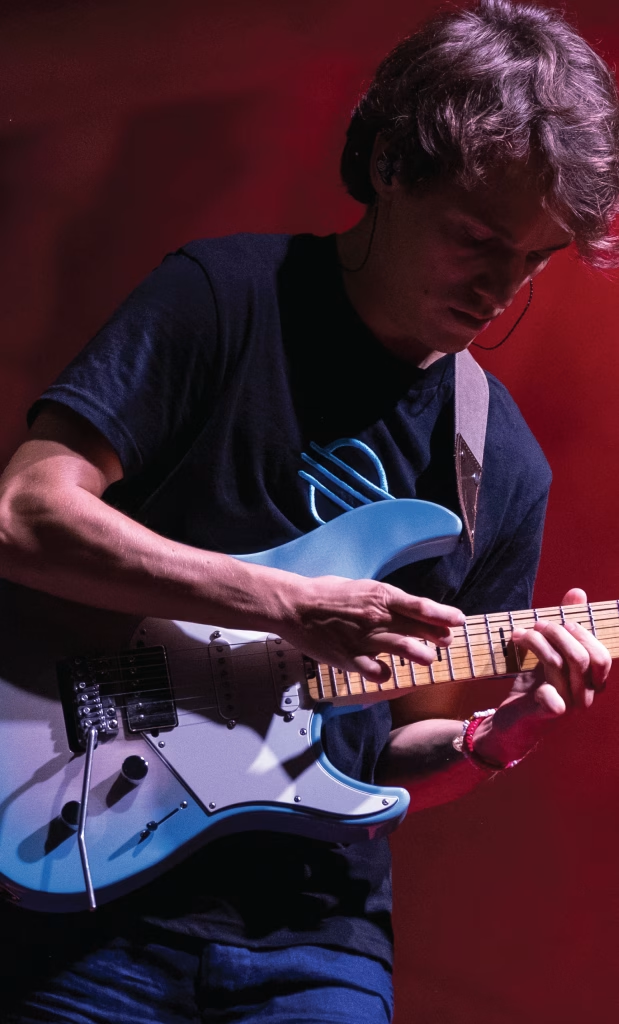
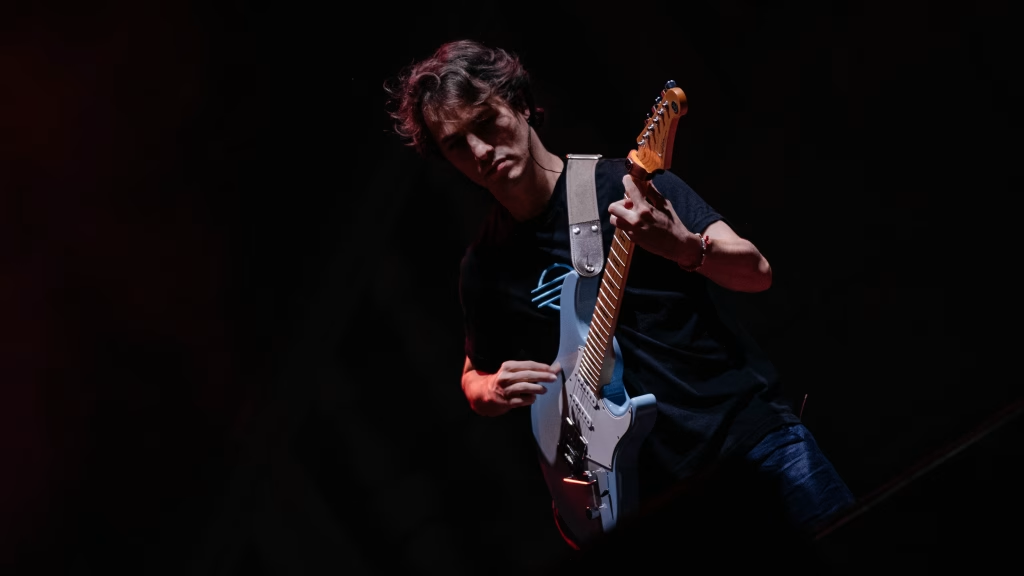
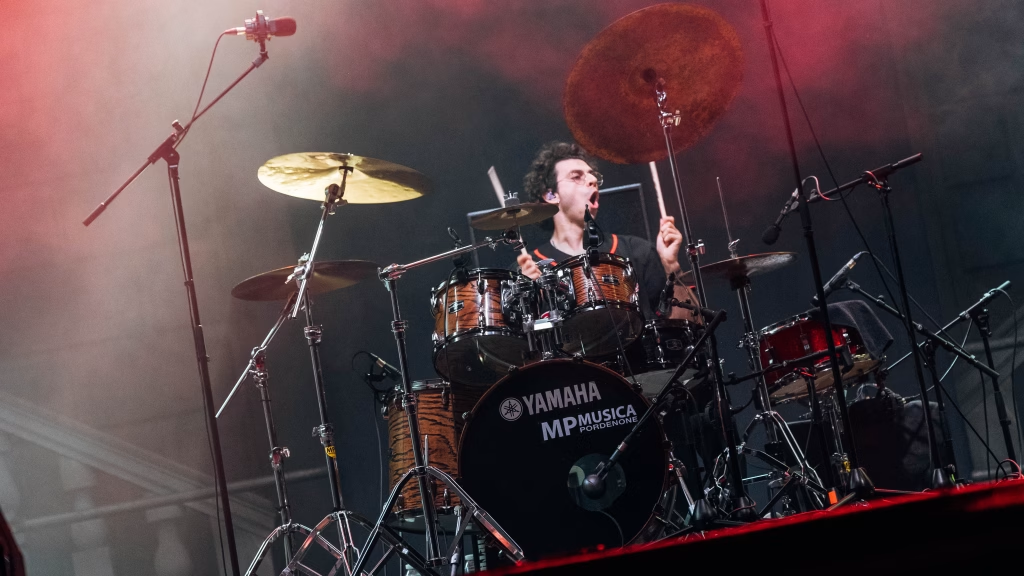
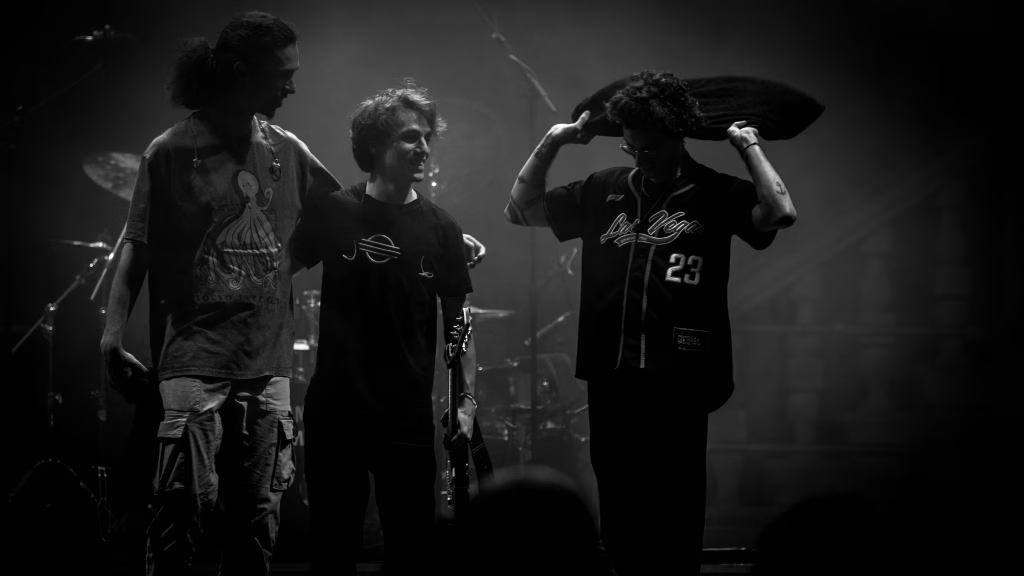
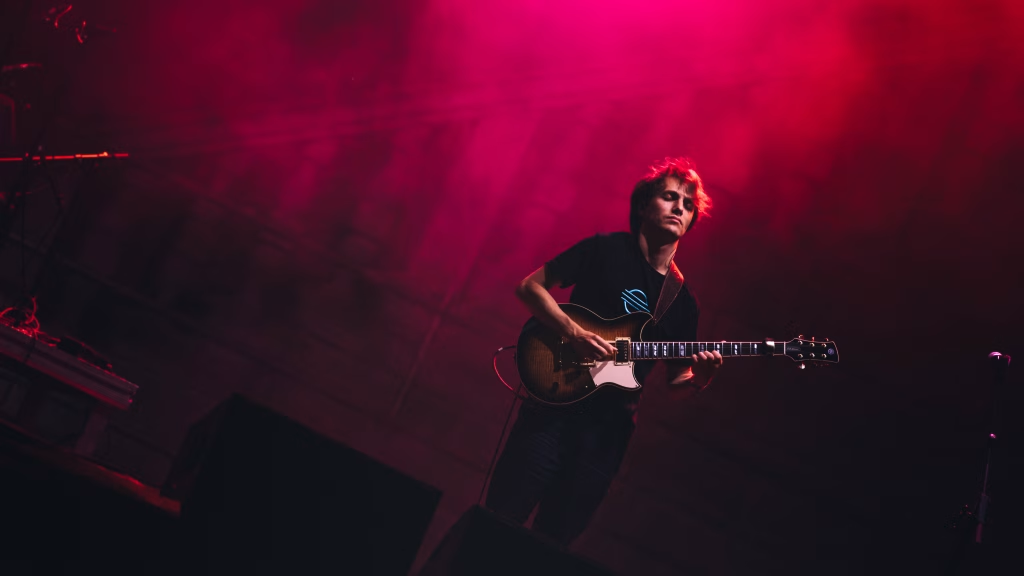
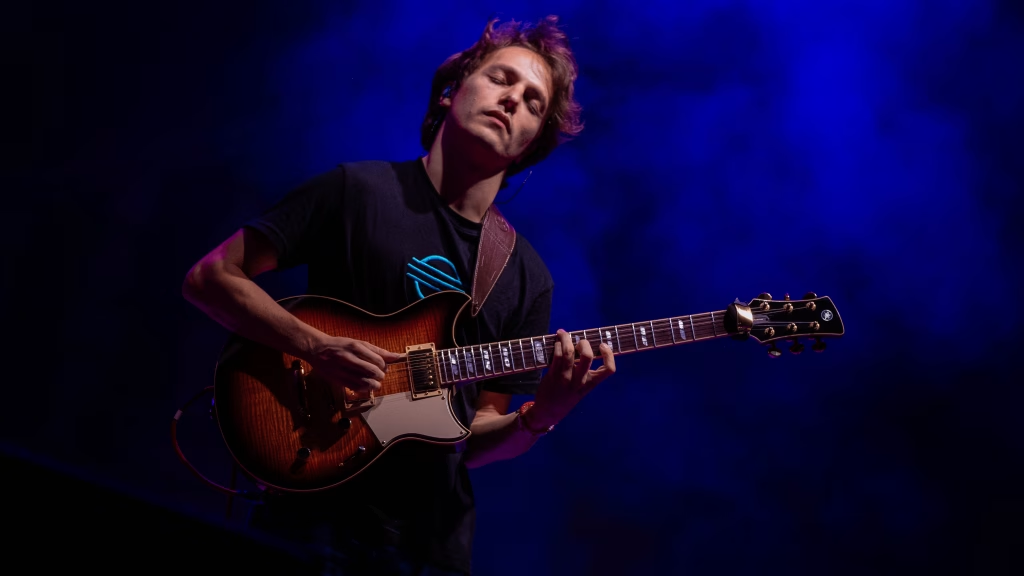
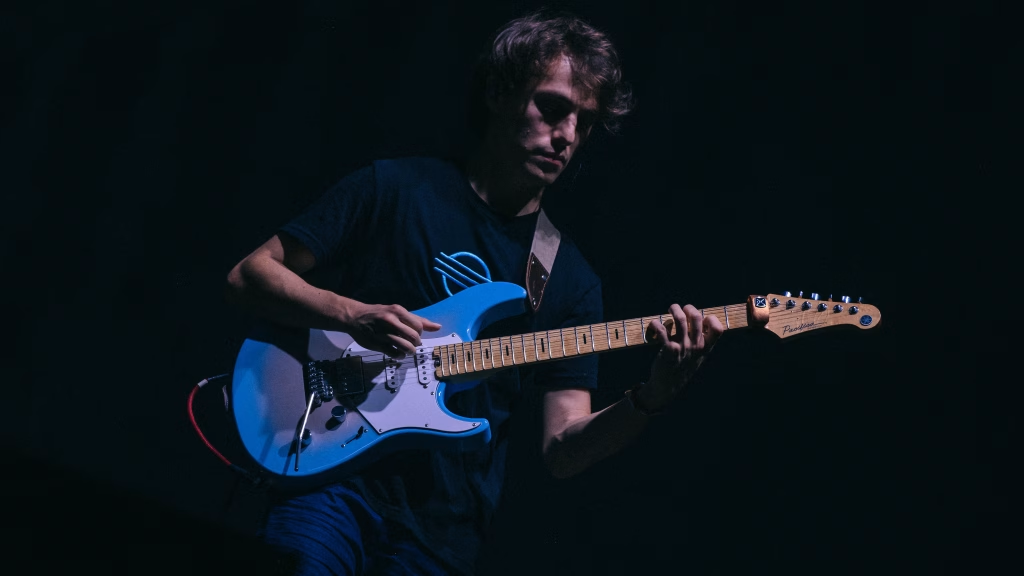
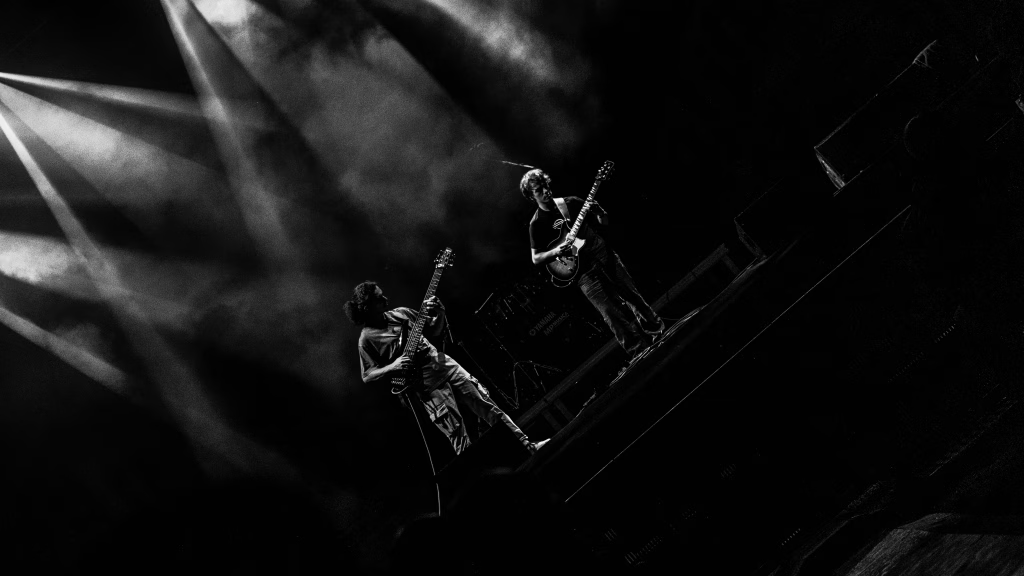
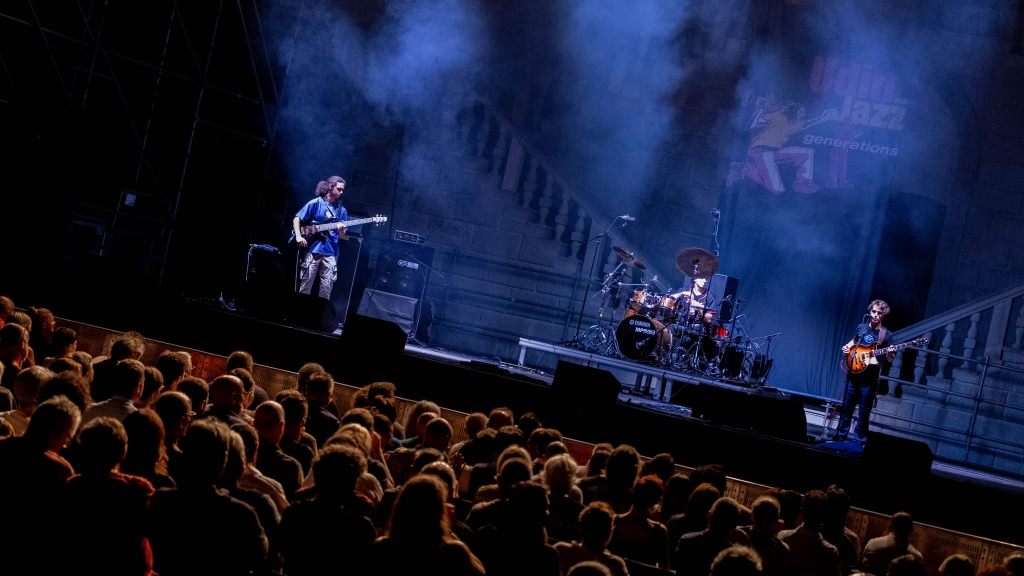
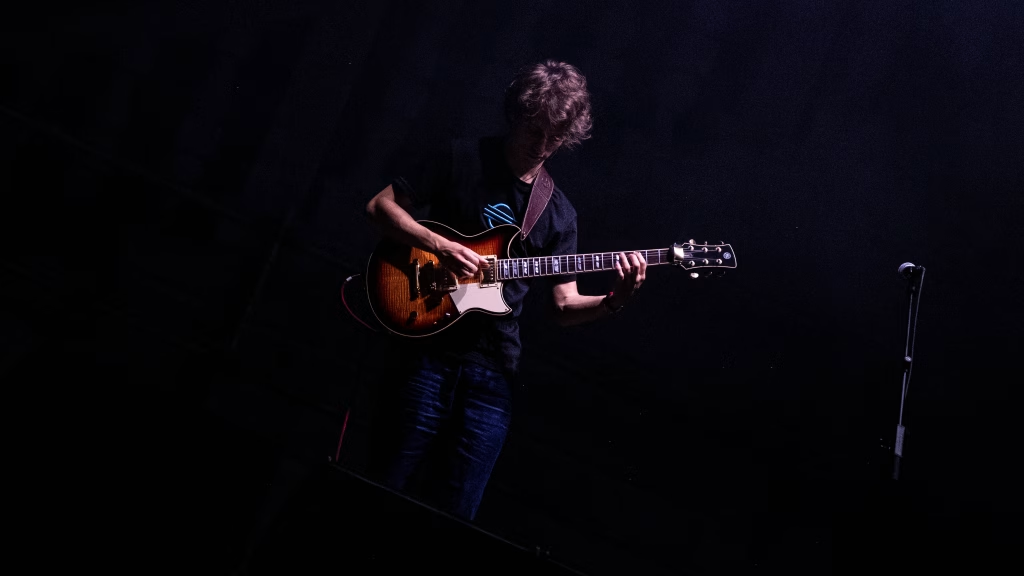
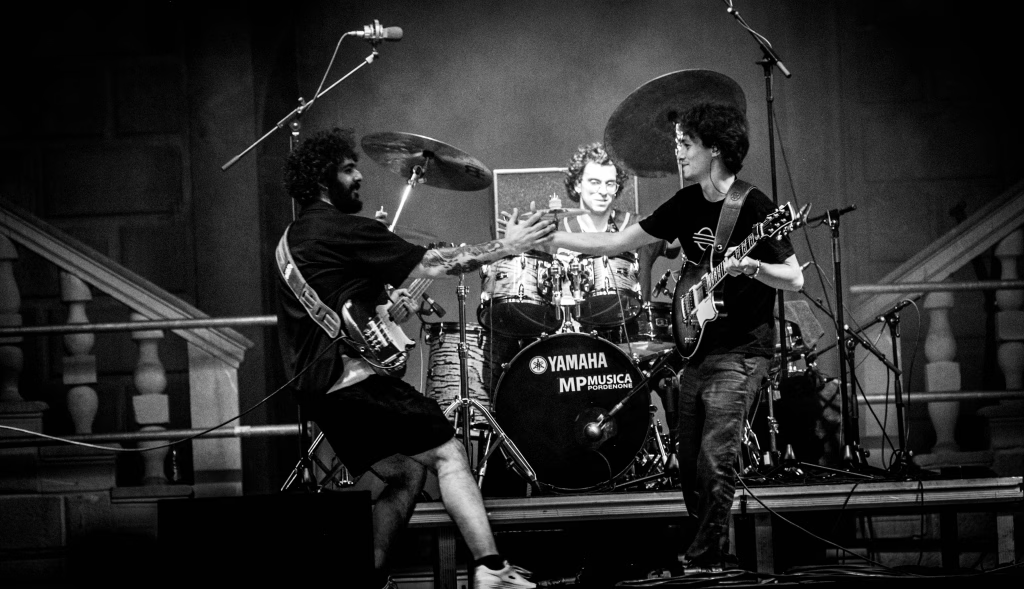
TCW: Speaking of gear on stage, We noticed you’re going direct with a digital rig these days. Is that a tonal choice?
Matteo Mancuso: (Laughs) Yeah, but just because I’m a lazy guy. It’s not that I don’t like the sound of an amp—I love analog sounds. We have a Plexi, a JCM 800, a Fender Princeton at home, which is one of my favorites. But for traveling, digital is much more reliable. You have the same sound every day. Soundchecks are easier because you don’t know what backline amp you’ll find. I think digital has now reached the level of analog sounds; it’s not a compromise. It depends on the context. On big festival stages with 40 people and screens, if you have a 4×12 behind you, it’s a nightmare for the sound engineer. Everyone uses in-ears and digital. In a trio setting, you can use an amp, but I prefer digital for a number of reasons.
TCW: This is your second time at this festival. How has your approach to the show changed since the last time?
Matteo Mancuso: Yeah, it was a different stage last time. We’ve learned a lot about stage performance and managing the setlist since then. Today, we’re bringing it to a bigger level with a bigger PA.
TCW: And after this tour, you’re planning to stop to create new material?
Matteo Mancuso: Yeah, we will stop. We already have four new songs ready. I hope to have another four by the end of this year. If everything goes well, we’ll have the album ready by the end of the year, and it will be released in January or February, depending on the label. We won’t do anything from September to December; I need time to compose. We have four new songs but we don’t play them live because people record everything, and I don’t want to spoil the new album.
TCW: There seems to be a renaissance of incredible Italian guitarists right now—yourself, Pasquale Grasso…
Matteo Mancuso: Pasquale Grasso, yeah!
TCW: Are there other Italian players who inspire you that the world should know about?
Matteo Mancuso: There is a very high level of guitar players in Italy. I saw Pasquale Grasso last year in New York at a small club called Mezzrow. It was mind-blowing; he’s one of the best jazz players I’ve ever seen. It’s the closest thing to a guitar sounding like a piano; it reminds me of Art Tatum. I can hear he transcribed a lot of piano stuff—he doesn’t think like a guitar player, and that’s the mind-blowing thing.
I also really like Marco Sfogli—he’s more on the metal/rock side, of course completely different genre and style. But I really like his sound. He has an exceptional taste. I like his albums. His last record is amazing. Both sonically speaking and performance speaking.
Another is Andrea Braido from the older generation. He’s well-known for playing with Vasco Rossi and is one of the best talents we have. He’s a perfect example of natural talent fused with discipline. He can play drums, bass, guitar—from Eddie Van Halen shred to Weather Report tunes. He has an incredible knowledge of music history and a strong passion—what we call azzimma. You can see it when he plays. Daniele Gottardo is also amazing, known for his eight-finger tapping technique. We played together last year; it was amazing.
TCW: You’re fluent in so many styles, from jazz to Gypsy Jazz. What’s your advice for a young guitarist overwhelmed by all the possibilities? How do they find their path?
Matteo Mancuso: The guitar is a hard instrument because there are so many ways to play it. The internet is a double-edged sword; there’s so much information we can get overwhelmed. My advice is to be as curious as you can. I’m lucky because I’m a very curious person. Whenever I hear something I don’t understand, I want to figure it out immediately.
Try to be as honest as possible with yourself. Always study the things that excite you the most about guitar. Otherwise, you will get lost. I had periods where I only listened to metal, and periods where I only listened to jazz. It’s important to have a wide musical diet, but don’t force yourself to listen to stuff you don’t want to just because a teacher told you to. Just listen to stuff that makes you emotional and excited.
Read the entire concert review from this year`s Udin&Jazz concert here!
Matteo Mancuso’s new album is expected in early 2026. Follow The Concert Witness for more information.
